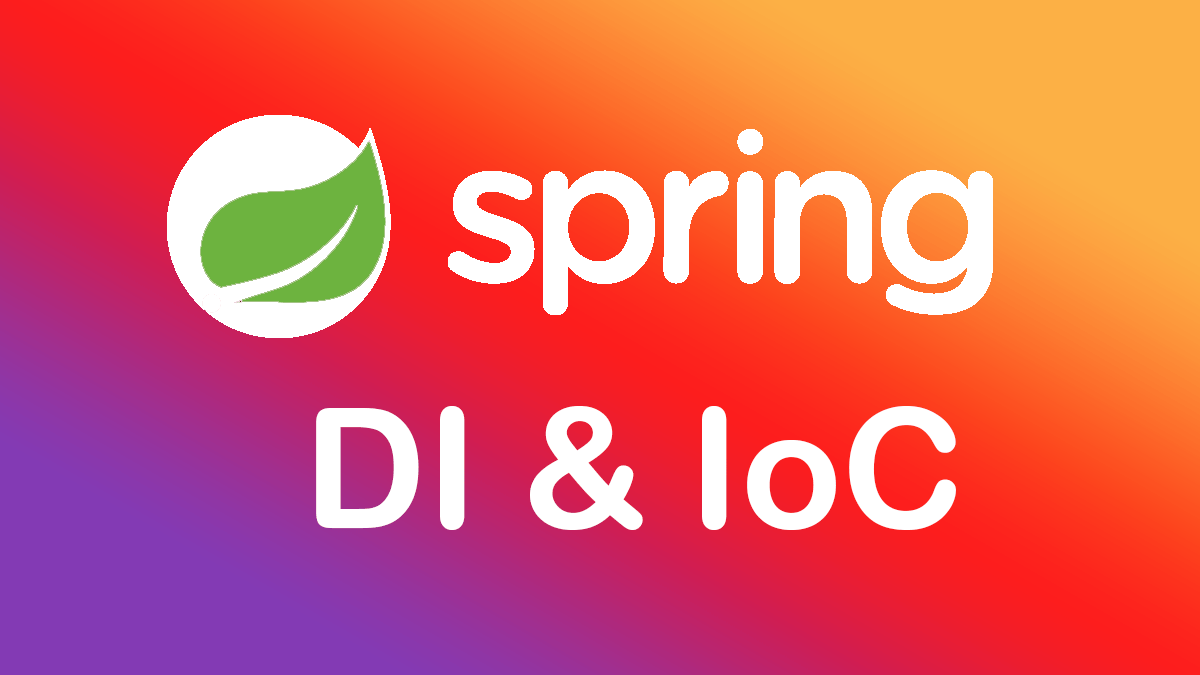Spring Core

Nhúng Dependency Injection bằng Constructor trong Spring
Giới thiệu nội dung bài viết
Chào bạn, chắc hẳn bạn cảm thấy khó hiểu về Nhúng DI bằng Constructor là gì đúng không?
1 .Dependency Injection thông qua cơ chế Constructor
Ngoài cơ chế DI thông qua setter như bài post trước, Spring IOC container cũng hỗ trợ cơ chế nhúng bean phụ thuộc thông qua hàm khởi tạo (Constructor) của đối tượng.
2 .Maven Pom
- Ví dụ mình có file maven pom như sau cho dự án.
1
2
3
4
5
6
7
8
9
10
11
12
13
14
15
16
17
18
19
20
21
22
<project
xmlns="http://maven.apache.org/POM/4.0.0"
xmlns:xsi="http://www.w3.org/2001/XMLSchema-instance"
xsi:schemaLocation="http://maven.apache.org/POM/4.0.0 http://maven.apache.org/xsd/maven-4.0.0.xsd">
<modelVersion>4.0.0</modelVersion>
<groupId>com.javadevsguide.springframework</groupId>
<artifactId>spring-dependency-injection</artifactId>
<version>0.0.1-SNAPSHOT</version>
<dependencies>
<dependency>
<groupId>org.springframework</groupId>
<artifactId>spring-context</artifactId>
<version>5.0.0.RELEASE</version>
</dependency>
<dependency>
<groupId>junit</groupId>
<artifactId>junit</artifactId>
<version>4.8.1</version>
<scope>test</scope>
</dependency>
</dependencies>
</project>
3 .Email Service
- Chúng ta sử dụng annotation @Service để khi IoC container nó quét qua thì nó sẽ tạo đối tượng (bean) EmailService trong container để quản lý.
1
2
3
4
5
6
7
8
package com.levunguyen.di;
@Service("EmailService")
public class EmailService implements MessageService{
public void sendMsg(String message) {
System.out.println(message);
}
}
4 .Client Service
- Chúng ta thêm annotation @Autowire phía trên của hàm khởi tạo ClientService. Khi Spring IOC quét qua ClientService nó sẽ nhúng EmailService bean có sẵn trong container của nó vào cho ClientService dùng.
1
2
3
4
5
6
7
8
9
10
11
12
13
14
15
16
17
18
package com.levunguyen.di;
@Component
public class ClientService {
private EmailService emailService;
@Autowired
public ClientService(EmailService messageService) {
super();
this.emailService = emailService;
}
public void processMsg(String message) {
emailService.sendMsg(message);
}
}
5 .Testing
-
Chúng ta sẽ tạo file cấu hình tên là AppConfiguration và annotation là @Configure. File này có nhiệm vụ tương tự như file xml confire ở bài trước.
-
Có một annotation quan trọng là @ComponentScan là ta chỉ ra thư mục mà ta đặt file EmailService và ClientService ở đâu để Spring IOC sẽ chui vào đó và quét 2 class này để tạo bean và nhúng bean.
1
2
3
4
5
@Configuration
@ComponentScan("com.levunguyen.di")
public class AppConfiguration {
}
1
2
3
4
5
6
7
public class TestApplication {
public static void main(String[] args) {
ApplicationContext applicationContext = new AnnotationConfigApplicationContext(AppConfiguration.class);
ClientService client = applicationContext.getBean(ClientService.class);
client.processMsg(" sending email ");
}
}




